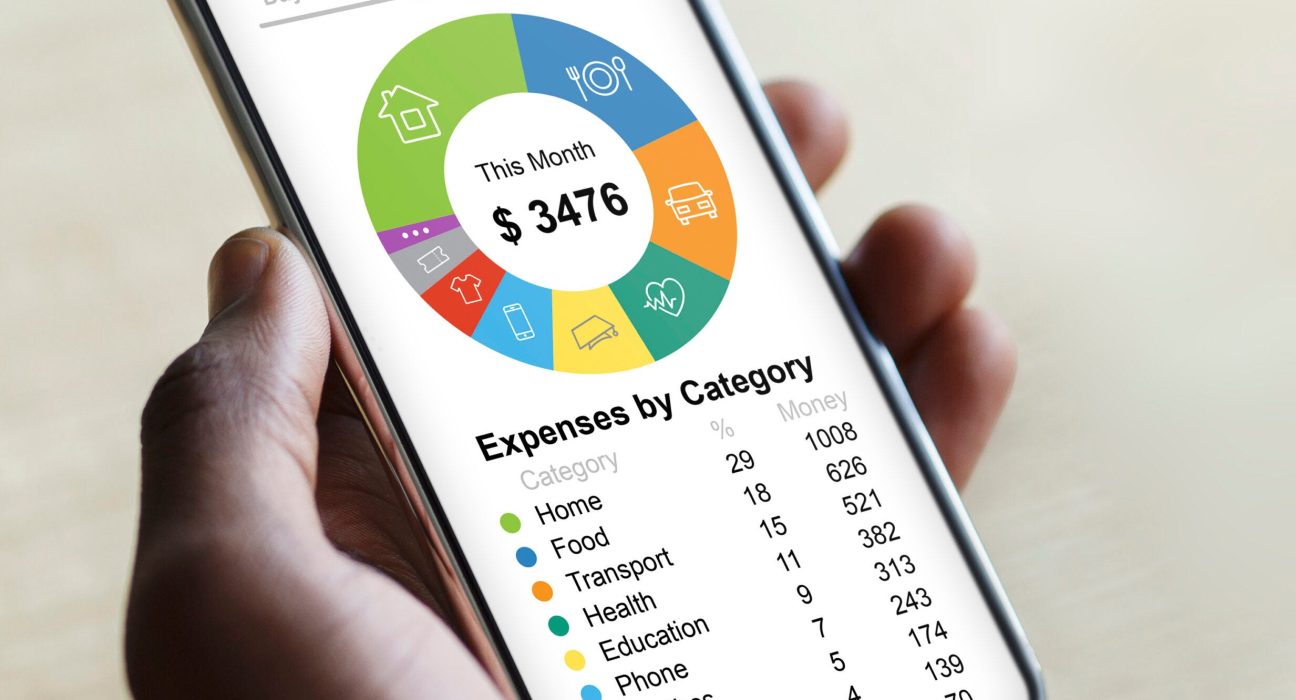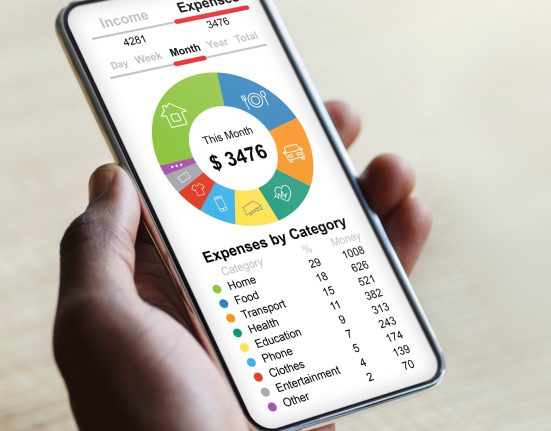As a loyal Mint user for years, I was sad to bid farewell to the popular free budgeting app on March 23. And though Mint encouraged former users to switch to Credit Karma, Credit Karma doesn’t offer any budgeting features. All you can do is view your monthly spending and latest transactions — no real help when it comes to creating and maintaining a budget.
So, I was on the hunt for a viable Mint alternative with an affordable price. And I found some great options, along with the budgeting app I’ll be using going forward.
Budgeting apps I tested
I chose to test a selection of popular budgeting apps that offer different price points, features and budgeting approaches. All of them are available for both iOS and Android, and all of them (with the exception of WallyGPT) allow you to import your Mint data to make the switch easier.
- PocketGuard: Free version available; $12.99 monthly or $74.99 yearly for PocketGuard Plus
- Rocket Money: Free version available; $4 to $12 a month for Premium (choose what you pay) ($4 and $5 options are billed annually)
- YNAB: $14.99 a month or $99 a year (free year for college students)
- Quicken Simplifi: $3.99 a month, billed annually ($2 a month if ordered by March 31, 2024)
- WallyGPT: Free
Specifically, I was looking for an app with features similar to Mint’s, including:
- Customizable categories
- The flexibility to adjust my budget as expenses crop up
- A simple, intuitive user experience
- Straightforward, valuable insights
- An affordable price
How I tested these budgeting apps
I linked my accounts to four different budgeting apps and tried them out simultaneously for several weeks to see how they stacked up. (There was a fifth app I tried to test, but was unsuccessful after multiple attempts.)
At the end of my testing, I found two apps that Mint users might enjoy — Rocket Money and PocketGuard — and two options that aren’t similar to Mint but provide a different approach to budgeting. The last option, WallyGPT, isn’t a viable fit for Android or iOS users, based on the glitches our team encountered.
My new budgeting app: Rocket Money

Noteworthy features:
- Links to external accounts
- Automated savings*
- Account sharing with a partner (in beta testing)*
- Credit score viewing
- Credit report tracking*
- Net worth tracking*
- Bill negotiation

After several weeks of trying out these apps, my choice to replace Mint is Rocket Money. Both PocketGuard and Rocket Money felt like comparable substitutions for Mint, but I found Rocket’s interface cleaner and easier to use, and I’m a fan of its sliding pricing scale. I’ve been using it since I concluded my test and continue to find it delivers the information I need with the easy user experience I prefer.
Rocket Money has a lot of the same features as Mint, offering free basic budgeting features and more advanced options — automated savings, net worth tracking and credit reports — with its paid tier. Like PocketGuard, it also offers bill negotiation as a separate service, which costs a portion of your savings if it’s successful.
Rocket Money’s interface is straightforward and intuitive to navigate. It’s easy to scan your budgeted spending, actual spending and projected savings to see how well you’re doing at a glance. Editing budget categories and transactions was intuitive and required fewer steps than with PocketGuard.

I also loved how many notification options Rocket Money provides. You can opt to receive alerts for a multitude of important financial stats to help you identify potential budget derailers and new opportunities to trim your expenses.
In addition to a simpler user experience, what set Rocket Money apart from PocketGuard for me is its seven-day free trial to test out premium features. If you decide you want to upgrade, you’ll choose to pay between $4 and $12 a month. You get the same features regardless of how much you pay.
Unlike PocketGuard, Rocket Money doesn’t offer debt payoff planning. That’s not a dealbreaker for me, but it could give PocketGuard the edge for users who value this feature.
How the other budgeting apps compared
PocketGuard: A close second

PocketGuard works similarly to Rocket Money. You can link external accounts, create a customizable budget and categorize your transactions. It also offers bill negotiation through its partner Billshark, which costs a portion of your savings if it succeeds.
PocketGuard’s free version is pretty basic but offers some budgeting tools, expense tracking and spending reports. Its paid version provides more customization, including advanced features like a debt payoff plan and automated savings features.
But I disliked that PocketGuard doesn’t offer a free trial so you can explore its paid tier to see if it’s worth the price. And since its paid version is one of the pricier ones I tested — $12.99 a month or $74.99 a year — this feels like a missed opportunity for the service.
As someone used to working with Mint, I found the experience of using PocketGuard familiar. It didn’t overwhelm me with unnecessary information, and I liked that I could see all my basic budget info at a glance, including categories I’ve overspent in and how much money I’d have left at the end of the month.
My biggest issue with Pocket Guard was that it’s not as intuitive as Mint. To edit how much I’d allotted for a category, for example, I had to click on that category, select “settings” and then choose “edit budget.”
Compared to other apps where you can tweak a category’s budgeted amount on the same screen as the budget summary, I found these extra steps irritating, especially when first setting up my budget. Editing transactions was a similar multistep process that left me frustrated.
YNAB: Robust, but it won’t work for everyone

YNAB (which stands for You Need a Budget) uses the zero-based budgeting method. With this method, you take the money you’ve earned and assign each dollar to a particular category until you have $0 left. You can assign your money manually or use Auto-Assign for recurring bills and expenses.
By earmarking all your funds, you discourage yourself from spending money you haven’t earned yet. But, should something come up and you find yourself spending more than you’ve allocated for a category, YNAB lets you reassign dollars from a category that has funds available. This allows for some flexibility, which even the most carefully crafted of budgets occasionally needs.
The main YNAB budget screen shows you how much you’ve allocated to each category, where you’ve overspent and where you have funds available. Alerts up top indicate areas requiring your attention. YNAB also offers loan payoff planning and free live workshops.
I can see how YNAB could be great for those who want to learn how to get better control of their spending or who prefer to dive into the nitty-gritty of how each dollar is used. But the zero-based budgeting method isn’t how I like to manage my money. I prefer to see upfront how much I expect to earn for the month and where that money will be going. With YNAB, you can only allocate money you’ve received, which I find frustrating.
YNAB is also the priciest app on this list at $14.99 a month or $99 a year. But there’s a lengthy 34-day trial to give it a test run before committing.
Quicken Simplifi: Not as intuitive as Mint, but worth considering

Quicken’s budgeting app, Simplifi, offers budgeting and lots more, including the ability to monitor your investments, assets and liabilities and track your net worth. Simplifi also has some unique budgeting features to help you stay on top of your cash flow, such as:
- Tags, which let you further categorize transactions within a specific budget area
- Watchlists to track how much you spend for a specific payee, category or tag
- Projected Balances, which estimate your balance over the next 30 days
You can also create a number of highly customizable reports, which you can filter by date, category, payee and more.
Those who want an overall snapshot of their finances beyond simply budgeting, but who aren’t interested in zero-sum budgeting, might find this a good alternative for YNAB.
However, despite what the name might imply, I didn’t find Quicken Simplifi particularly simple to use. The budget menu doesn’t show you your specific transactions or categories. Instead, you have to click on “Planned Spending” to see your budget categories, which requires a lot of scrolling. My phone screen only showed me a couple of categories at a time.
Transactions that haven’t been categorized are under “Other Spending.” Once you’ve sorted these transactions into categories, you have to toggle back to the “Planned Spending” screen to see how this changes how much you’ve spent in each category. Other apps allow you to view miscellaneous transactions on the same screen as your categorized transactions. Overall, I found the user experience for budgeting to be clunky and not always intuitive.
In addition, Simplifi doesn’t offer a free version, and with no option to pay monthly, you must commit to a full year upfront. With no free trial, that means you could pay for a year’s worth of features you won’t really use. I’d rather pay a little more for the billing flexibility and ability to ensure I’m getting the best product for my needs.
WallyGPT: A no-go
I was looking forward to testing WallyGPT, the first AI-powered budgeting app, but I never got the chance. I could install the app on my Android device, but when I tried to create a new account, I got stuck on an endless loading screen. Other CNET Money editors with Androids had the same issue.
IPhone users were similarly out of luck — WallyGPT isn’t even available on the App Store now. We reached out to WallyGPT but have not heard back.
Final thoughts
Budgeting apps are extremely personal. What works for me may not work best for you. While I think Rocket Money is the best Mint alternative, you might be happier with PocketGuard or one of the apps that work a little differently. And since most of these budgeting apps offer free trials, you can run your own field test to find the best fit for you.







